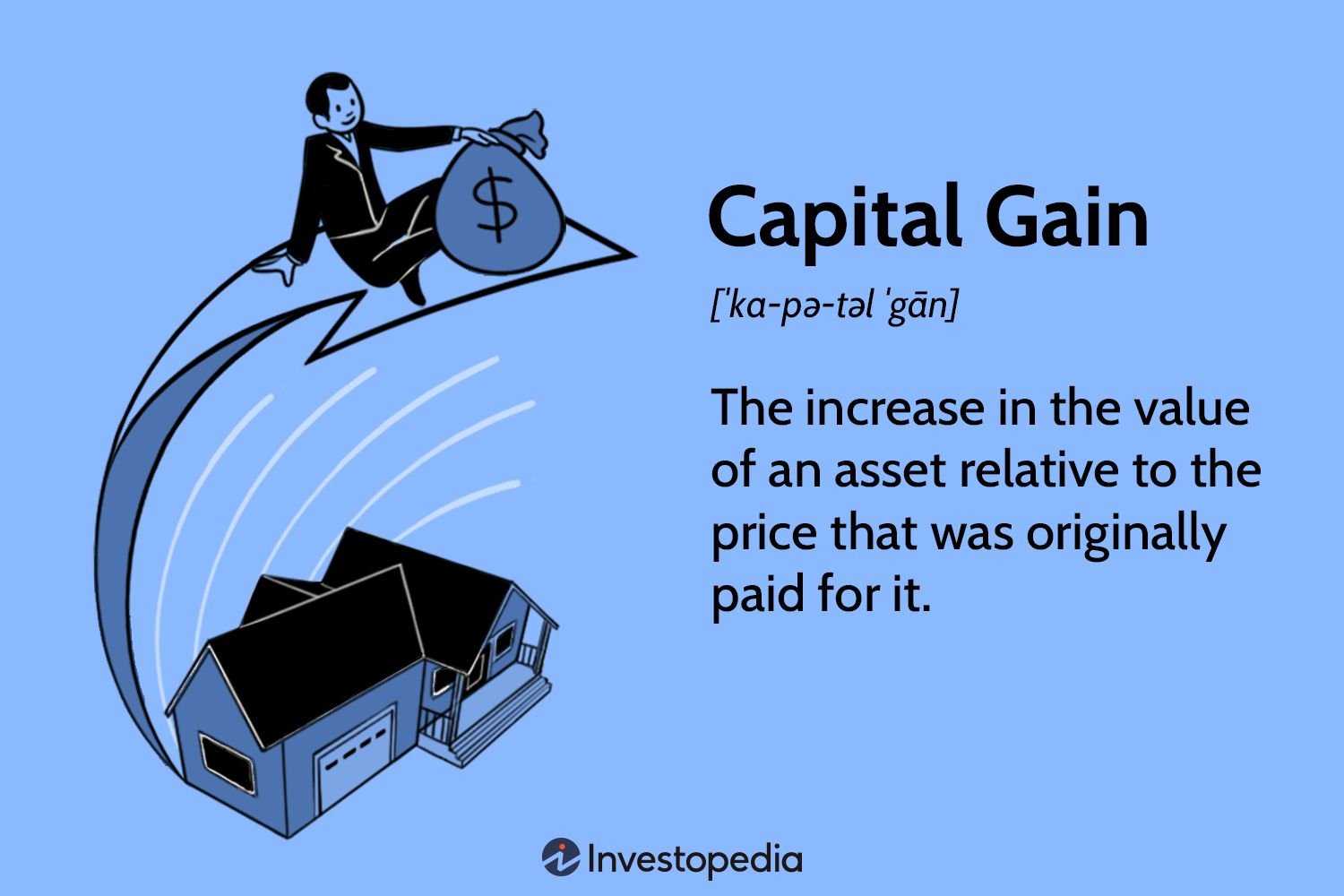Looking to expand your investment portfolio but not sure where to start? Wondering what a closed-end fund in investments actually is? Well, you’re in the right place! In this article, we’ll unravel the mysteries surrounding closed-end funds and explain what they are, how they work, and why they might be a valuable addition to your investment strategy. So, if you’re ready to dive into the world of closed-end funds and discover how they can enhance your financial journey, keep reading!
What is a Closed-End Fund in Investments?
Closed-end funds are a popular investment option for many individuals looking to diversify their portfolios. These funds offer a unique structure that sets them apart from other types of investment vehicles, such as open-end mutual funds. In this article, we will explore what a closed-end fund is, how it works, and the potential benefits and drawbacks associated with investing in them.
The Basics of Closed-End Funds
Closed-end funds are a type of investment company that pools money from multiple investors to invest in a diversified portfolio of securities. They are known as “closed-end” funds because they have a fixed number of shares available, and once those shares have been issued, they are listed and traded on a stock exchange, just like individual stocks. Unlike open-end mutual funds, which continuously issue new shares and redeem existing ones, closed-end funds do not issue new shares after their initial public offering (IPO).
How Closed-End Funds Operate
Closed-end funds are managed by professional investment managers or firms, who make investment decisions on behalf of the fund’s shareholders. These managers aim to generate profits by investing in a diversified portfolio of securities, which can include stocks, bonds, real estate, commodities, and other assets. The fund’s portfolio holdings are publicly disclosed, allowing investors to evaluate the underlying investments.
Once the closed-end fund completes its IPO and the shares are listed on an exchange, investors can buy or sell shares of the fund on the secondary market, much like they would with regular stocks. The market price of closed-end fund shares is determined by supply and demand factors, which may cause the shares to trade at a premium or discount to their net asset value (NAV). The NAV represents the total value of the fund’s assets minus its liabilities, divided by the number of outstanding shares.
Differences Between Closed-End Funds and Other Investment Vehicles
Closed-end funds have several distinct characteristics that differentiate them from other types of investment vehicles:
- Fixed Number of Shares: Closed-end funds issue a fixed number of shares during their IPO and do not continuously issue or redeem shares.
- Exchange-Traded: Closed-end fund shares are listed and traded on stock exchanges, allowing investors to buy and sell shares throughout the trading day.
- Potential for Premium or Discount: Closed-end funds can trade at a premium or discount to their NAV, depending on market demand and investor sentiment.
- Active Management: Closed-end funds are actively managed by investment professionals who make investment decisions based on the fund’s investment objective and strategy.
Advantages of Investing in Closed-End Funds
Investing in closed-end funds offers several potential advantages for investors:
Potential for Enhanced Returns
Closed-end funds may provide investors with an opportunity to achieve higher returns compared to other investment vehicles. The active management approach allows fund managers to actively buy and sell securities based on market conditions, potentially capitalizing on investment opportunities and generating above-average returns.
Access to Specialized Investment Strategies
Closed-end funds often focus on specialized investment strategies that may not be readily available to individual investors. For example, there are closed-end funds that invest in specific sectors, regions, or asset classes, offering investors a chance to gain exposure to unique investment opportunities.
Income Generation
Many closed-end funds aim to provide regular income to investors through dividend payments. These funds may invest in income-generating assets, such as bonds or dividend-paying stocks, and distribute a portion of the income generated to shareholders. This can be particularly attractive for investors seeking a steady stream of income.
Potential for Discounts to NAV
Closed-end funds can trade at a discount to their NAV, presenting an opportunity for investors to purchase fund shares at a price lower than the underlying value of the fund’s assets. If the discount narrows or the market price eventually aligns with the NAV, investors may benefit from capital appreciation.
Considerations and Risks of Closed-End Funds
While closed-end funds offer potential advantages, it is essential for investors to carefully consider the associated risks and factors that may affect their investment:
Market Price Volatility
The market price of closed-end fund shares can be subject to significant volatility, often influenced by investor sentiment, market conditions, or changes in the fund’s performance. Investors should be prepared for potential fluctuations in the value of their investment.
Illiquidity
Unlike open-end mutual funds, closed-end funds do not offer daily redemptions at the NAV. Instead, investors must buy or sell shares on the secondary market, which may have lower liquidity compared to the primary market. This illiquidity can make it more challenging to execute trades, potentially leading to wider bid-ask spreads and higher transaction costs.
Potential for Premiums or Discounts
Closed-end funds can trade at a premium or discount to their NAV. While a discount presents a potential buying opportunity, it is essential to evaluate the reasons behind the discount and assess the fund’s underlying assets and performance before making an investment decision.
Expense Ratios and Fees
Closed-end funds often have expense ratios and fees, which can impact overall returns. Investors should carefully review the fund’s prospectus to understand the fees associated with investing in the fund and assess whether the potential returns justify the costs.
Interest Rate and Market Risks
Closed-end funds that invest in fixed-income securities are exposed to interest rate risk. When interest rates rise, bond prices typically fall, which can negatively impact the value of the fund’s holdings. Additionally, all investments are subject to market risks, and the value of a closed-end fund’s shares can fluctuate based on market conditions.
Closed-end funds offer investors a unique investment opportunity with the potential for enhanced returns, specialized strategies, and regular income generation. However, investors should carefully assess the risks and consider factors such as market price volatility, illiquidity, and fees before investing in closed-end funds. By understanding the characteristics and dynamics of closed-end funds, investors can make informed investment decisions that align with their financial goals and risk tolerance.
I've Never Heard Closed End Funds Explained Simply, Until Now
Frequently Asked Questions
Frequently Asked Questions (FAQs)
What is a closed-end fund in investments?
A closed-end fund is a type of investment fund that operates with a fixed number of shares. These funds are traded on stock exchanges, similar to stocks, and are managed by professional portfolio managers. Closed-end funds differ from open-end funds, such as mutual funds, as they do not issue new shares or redeem existing shares on demand.
How does a closed-end fund work?
A closed-end fund raises capital by issuing a fixed number of shares through an initial public offering (IPO). After the IPO, the fund’s shares are traded on stock exchanges like any other listed security. The share price is determined by supply and demand dynamics in the market, often deviating from the net asset value (NAV) per share of the fund’s underlying assets.
What are the advantages of investing in a closed-end fund?
Investing in closed-end funds offers several advantages. Firstly, closed-end funds can provide diversification across a range of asset classes and investment strategies. They also have the potential to generate income through regular dividend distributions. Additionally, closed-end funds can offer the opportunity to invest in specialized sectors or geographic regions that may be otherwise difficult for individual investors to access.
Are there any risks associated with closed-end funds?
Like any investment, closed-end funds come with risks. The share price of a closed-end fund can experience volatility due to market conditions, investor sentiment, and changes in the perception of the fund’s performance. Additionally, closed-end funds may trade at a premium or discount to their net asset value, which can impact investor returns. It is essential to carefully evaluate the fund’s investment strategy, management team, and historical performance before investing.
Can I buy and sell closed-end funds anytime?
Yes, closed-end funds can be bought and sold on stock exchanges throughout regular trading hours. However, it’s important to note that closed-end funds may trade at a premium or discount to their net asset value (NAV) at any given time. Investors should consider the fund’s current market price and compare it to its NAV before making investment decisions.
How are closed-end funds different from open-end funds?
Closed-end funds differ from open-end funds primarily in terms of share issuance and redemption. Closed-end funds have a fixed number of shares that are bought and sold on stock exchanges, whereas open-end funds continuously issue and redeem shares at their net asset value (NAV). Closed-end funds trade like stocks, whereas open-end funds are priced once per day based on the NAV.
Do closed-end funds pay dividends?
Yes, closed-end funds can distribute dividends to their shareholders. These dividends are typically generated from the income earned by the fund’s underlying investments, such as interest, dividends, or capital gains. The frequency and amount of dividend distributions may vary among closed-end funds based on their investment objectives and strategies.
Can closed-end funds use leverage?
Yes, closed-end funds have the ability to employ leverage as a part of their investment strategy. By using leverage, closed-end funds can borrow money to invest in additional assets, potentially amplifying both returns and risks. The decision to use leverage is made by the fund’s portfolio manager and is based on various factors, including market conditions and the fund’s investment objectives.
How can I evaluate the performance of a closed-end fund?
To evaluate the performance of a closed-end fund, investors can consider several factors. These include assessing the fund’s historical returns and comparing them to relevant benchmarks or similar funds. It is also important to review the fund’s expense ratio, management team, investment strategy, and risk profile. Additionally, analyzing the fund’s premium or discount to its net asset value can provide insights into market sentiment and potential opportunities.
Final Thoughts
A closed-end fund in investments is a type of investment vehicle that operates with a fixed number of shares. It is not open for continuous buying and selling like open-end funds. By distributing a set number of shares during an initial public offering, closed-end funds provide investors with the opportunity to buy into a diversified portfolio of securities. These funds are traded on exchanges, allowing investors to buy and sell shares throughout the day at market prices. In conclusion, a closed-end fund in investments is a unique investment option that offers investors the ability to buy and sell shares on exchanges, providing diversification and liquidity.


